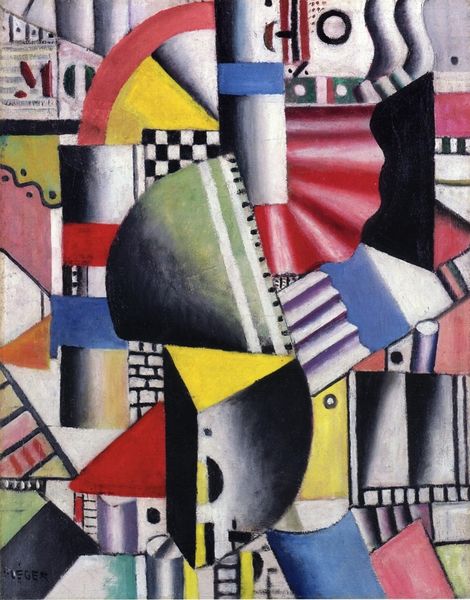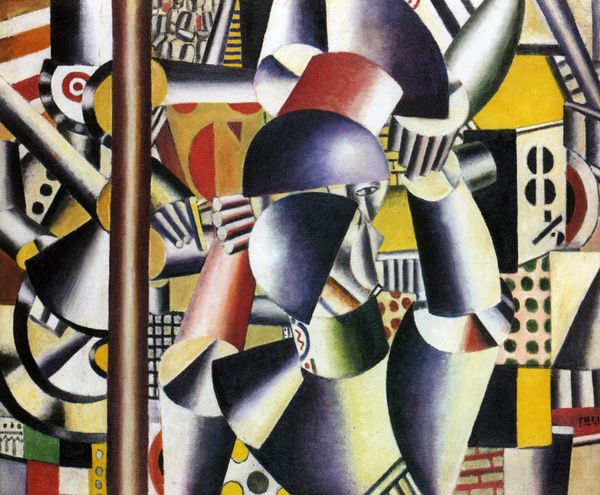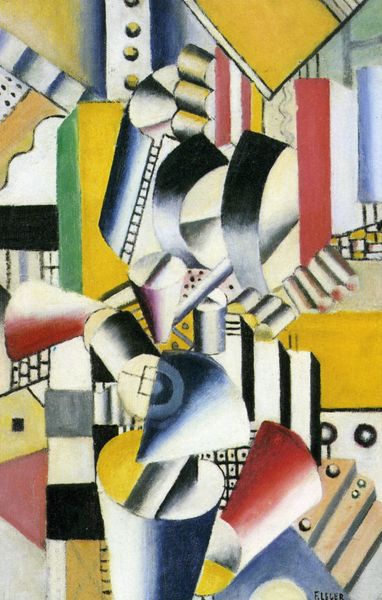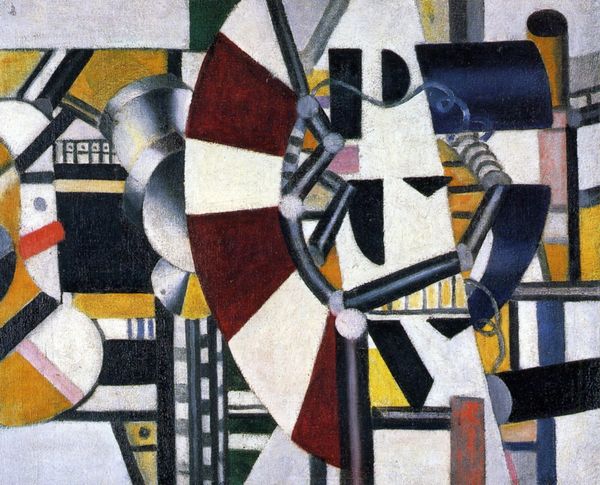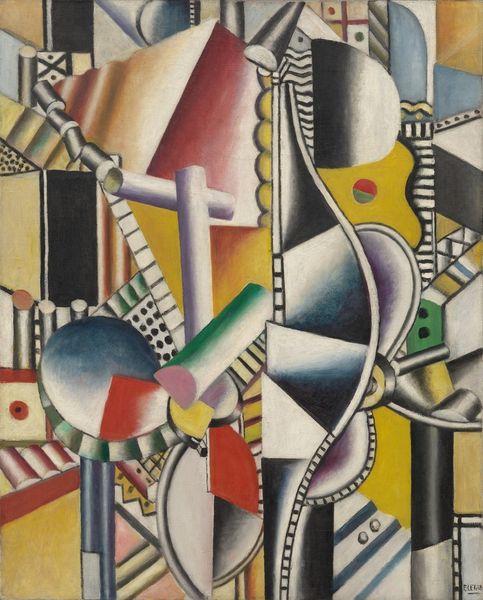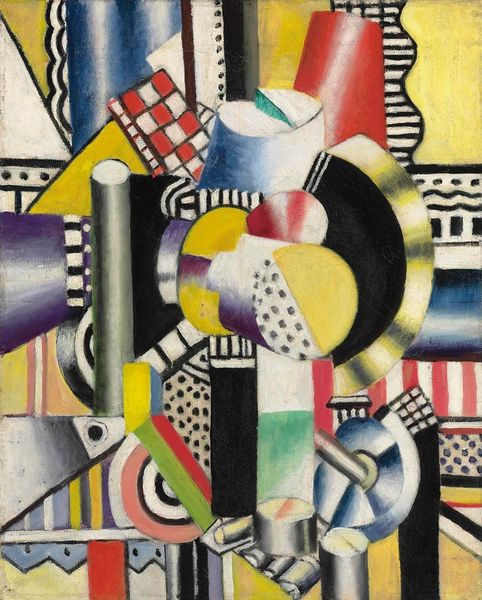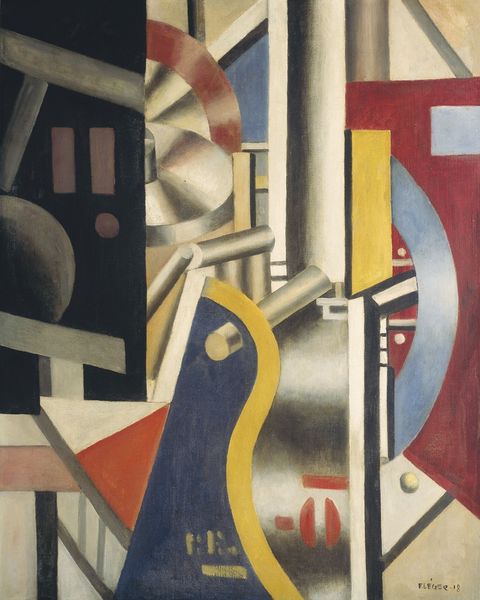
painting, oil-paint
#
cubism
#
painting
#
oil-paint
#
pop art
#
geometric
#
abstraction
#
modernism
Copyright: Public domain US
Editor: Right now, we’re looking at Fernand Léger’s "Composition" from 1919, an oil painting that dives deep into abstraction. It strikes me as a bit chaotic at first glance, almost like a machine exploded. All these geometric forms… what am I even looking at? How do you interpret this work, and where do you even begin with something so abstract? Curator: Chaotic, yes, but perhaps purposefully so. Think about the world in 1919 – a world just piecing itself back together after a devastating war, grappling with rapid industrialization. Léger, like many artists then, was fascinated by machines, by their power and also their fragmentation. For me, this isn't an explosion, but a dynamic interplay of mechanical parts, almost as if Léger is asking us, "What *is* the modern world made of?" See how he uses pure, unmodulated colors and hard-edged forms? Does it remind you of anything? Editor: Hmm… I see some Cubist influence. Is he breaking down objects and showing them from multiple angles? Curator: Precisely! And beyond Cubism, there's this embrace of industrial aesthetics – a sort of "machine aesthetic." It's less about representation and more about creating a visual rhythm, a language of form and color that reflects the energy of the machine age. To me, this painting isn’t just depicting machines, it *feels* like one. But what feeling do the colours evoke for you? Editor: Now that you point it out, the primary colors do add a sense of, almost… cheerful, relentless energy. It's a complex painting that feels unsettling but is actually sort of celebratory? I appreciate the industrial feel that reflects the cultural period. I think I finally have a more clear interpretation. Curator: It is interesting how forms and colours create emotional tension. It's like Léger grabbed the machine age and threw it onto the canvas, making us think about what that explosion *really* meant.
Comments
No comments
Be the first to comment and join the conversation on the ultimate creative platform.
